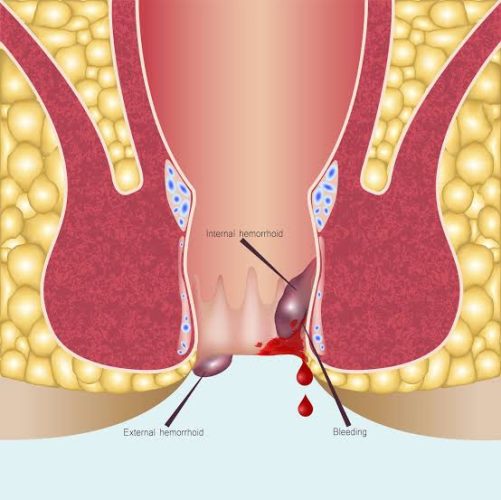Hemorrhoids, also known as piles, are swollen veins in the lower rectum or anus.
They can be internal (inside the rectum) or external (under the skin around the anus).

They can be uncomfortable and sometimes painful, but are usually not serious.
There are several factors which contribute to the development of hemorrhoids, some of them are:
Sitting for Long Periods
Prolonged sitting, especially on the toilet, can increase pressure on the veins in the anus.
Straining During Bowel Movements
This is one of the most common causes. Straining increases pressure on the veins in the rectum and anus.
Chronic Constipation or Diarrhea
Both conditions can cause straining or irritation during bowel movements, leading to hemorrhoids.
Obesity
Excess body weight puts additional pressure on the pelvic veins, increasing the risk of hemorrhoids.
Pregnancy
The increased pressure on the pelvic veins from the growing uterus, along with hormonal changes, can lead to hemorrhoids during pregnancy.
Low-Fiber Diet
A diet low in fiber can lead to constipation and straining during bowel movements, contributing to hemorrhoid development.
Heavy Lifting
Regularly lifting heavy objects can increase pressure on the abdominal and rectal veins.
Aging
As people age, the tissues supporting the veins in the rectum and anus can weaken, making hemorrhoids more likely.
Genetics
Some people may inherit a tendency to develop hemorrhoids due to weak vein walls or other anatomical factors.
Here are some common treatments and lifestyle changes that can help manage and cure hemorrhoids:
Remedies/Cure
- High-Fiber Diet: Increasing your fiber intake can soften stools and reduce straining during bowel movements, which helps prevent hemorrhoids. Foods high in fiber include fruits, vegetables, whole grains, and legumes.
- Hydration: Drink plenty of water throughout the day to stay hydrated and promote regular bowel movements.
- Warm Sitz Baths: Soaking the anal area in warm water for 10-15 minutes several times a day can help reduce swelling and discomfort.
- Topical Treatments: Over-the-counter creams, ointments, or pads containing witch hazel or hydrocortisone can provide temporary relief from itching and pain.
- Cold Compresses: Applying ice packs or cold compresses to the affected area can reduce swelling and numb the pain.
- Avoid Straining: Avoid straining during bowel movements and try not to sit on the toilet for long periods.
- Good Hygiene: Keep the anal area clean and dry. Use moist towelettes or gentle wipes instead of dry toilet paper to prevent irritation.
Prevention
- Regular Exercise: Regular physical activity can help prevent constipation, which can lead to hemorrhoids.
- Avoid Prolonged Sitting: Sitting for long periods, especially on the toilet, can increase pressure on the veins in the anus.
- Manage Weight: Maintaining a healthy weight can reduce pressure on the pelvic region, decreasing the risk of hemorrhoids.
Also Read: 6 Common Causes Of Cholera
If you suspect you have hemorrhoids or if your symptoms persist, it’s a good idea to consult with a healthcare provider for an accurate diagnosis and appropriate treatment.
Cesarean Section: Who Decides? Man Or Wife?

